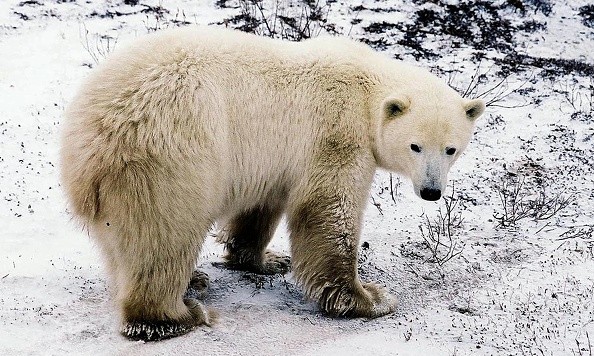Since the beginning of satellite records in 1979, Arctic sea ice has been steadily decreasing, but a new study makes a chilling (or perhaps warming) prediction: by the end of this century, Arctic sea ice may disappear during the summer, putting polar bears and other ice-dependent species at risk of extinction.

Last Ice Area
The "Last Ice Area" is an Arctic area with the oldest and thickest ice. It stretches from the western shore of the Canadian Arctic Archipelago to Greenland's northern coast, covering more than 380,000 square miles (1 million square kilometers). The 13-foot-thick (4-meter) ice area was dubbed by scientists with the expectation that it would persist for decades.
However, by 2050, the sea ice will have shrunk substantially under the most optimistic and pessimistic scenarios for warming caused by climate change. The most optimistic scenario, in which carbon emissions are significantly reduced to avoid the greatest warming, may result in just a small amount of ice remaining in the region. According to a recent study, the summer ice - and the polar bears and seals that rely on it - may vanish by 2100 under the most pessimistic scenario, in which emissions continue at their current pace of growth.
In a statement, study co-author Robert Newton, a senior research scientist at Columbia University's Lamont-Doherty Earth Observatory, said, "Unfortunately, this is a big experiment we're undertaking." "If year-round ice disappears, entire ice-dependent ecosystems will collapse, and a new era will dawn.
Sea-Ice Coverage

Each year, the Arctic sea-ice cover expands and decreases, reaching its lowest point in September after the summer melt season, before rebounding in the autumn and winter to reach its highest point in March. Thus, the span of the sea ice has yo-yoed between ever-shrinking bounds as carbon dioxide and other greenhouse gases increasingly contribute to the warming of the atmosphere, with the past 15 years bringing the lowest 15 sea-ice extents in the satellite record, according to the National Snow and Ice Data Center (NSIDC).
Worse yet, the National Snow and Ice Data Center (NSIDC) says that the quantity of older, thicker Arctic ice that has survived at least one melt season is at an all-time low, roughly a fifth of what was documented by the first satellite surveys 40 years ago.
Photosynthetic algae, small crustaceans, fish, seals, narwhals, bowhead whales, and polar bears all live on or under the changing ice network, and a more severe drop in ice covering might have a debilitating effect on their survival.
The researchers said, "For example, ringed seals and polar bears have depended on their dens in the ridged and corrugated sea-ice surface to stay approximately in one spot."
Polar Bears Nearing Extinction
Polar bears (Ursus maritimus), specialist predators, would be especially vulnerable to extinction if the ice disappeared. The Arctic bears hunt by grabbing unlucky seals who emerge to the surface to breathe, having adapted to hide atop sea ice. In addition, polar bears have jaws adapted for eating soft blubber and meat, and while they have been seen on land eating seabird eggs and caribou, a 2015 study published in the journal Frontiers in Ecology and the Environment found that the calories they gain from these sources do not balance out the calories they burn foraging for these animals, according to Live Science.
According to Live Science, this fast habitat shift might lead to the extinction of polar bears or more extensive interbreeding with grizzly bears (Ursus arctos horribilis), whose territories are moving northward as the temperature warms. Hybrid "pizzly" bears may ultimately replace polar bears as a result of this process. Nonetheless, the researchers predict that the summer ice and the ice-dependent ecosystem would vanish under the more gloomy, increasing-emission scenario.
"This isn't to imply it'll be a dead, desolate world," Newton said. "New things will appear, but new animals may take some time to infiltrate." For example, fish and photosynthetic algae may migrate north from the North Atlantic. However, they are unsure if the new environment would be stable enough to support such species year-round, especially during the long, dark Arctic winter.
IPCC Report

Even a partially melting the Arctic may trigger a positive feedback loop: the water's surface is darker and more effective at collecting sunlight, accelerating the rate of warming in a vicious cycle.
The United Nations' Intergovernmental Panel on Climate Change (IPCC) published a historical report on Aug. 9 warning that Earth is on the verge of reaching a critical threshold: a global temperature increase of 1.5 degrees Celsius (2.7 degrees Fahrenheit) due to climate change within the next 20 years. If global warming is to stay below 1.5 degrees Celsius, a third draft portion of the IPCC report leaked to the Spanish newspaper CTXT cautioned that global greenhouse gas emissions must peak in the next four years.
For more wildlife news, don't forget to follow Nature World News!
© 2025 NatureWorldNews.com All rights reserved. Do not reproduce without permission.





